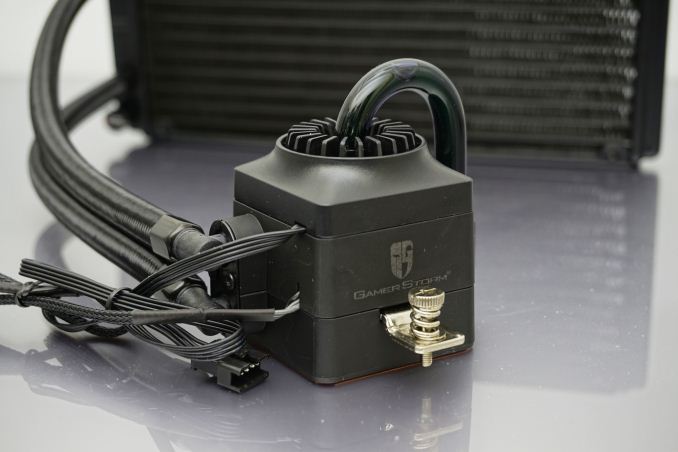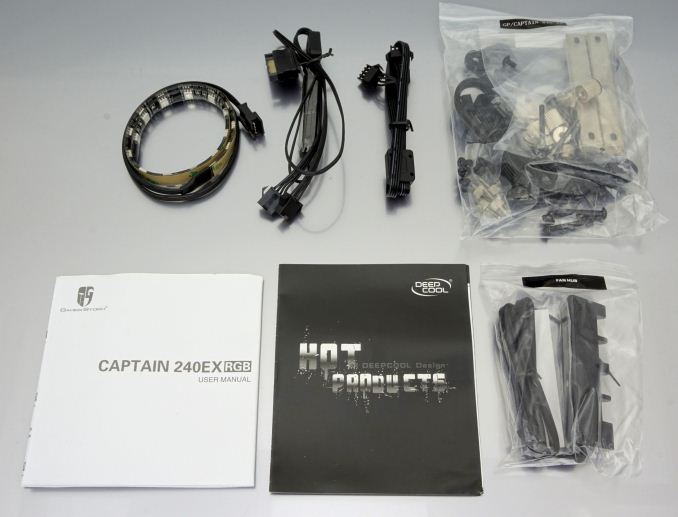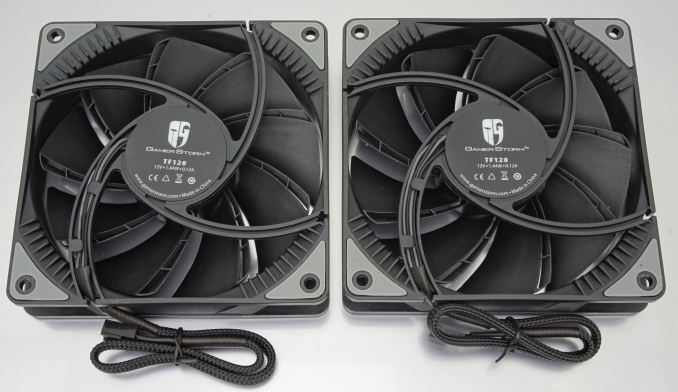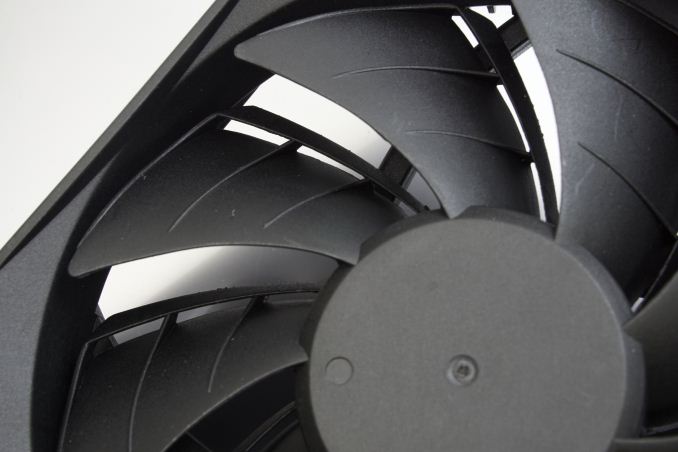The DeepCool Captain 240 EX RGB AIO Cooler Review: Pump it Up, Without the Noise
by E. Fylladitakis on December 14, 2017 9:00 AM EST- Posted in
- Cases/Cooling/PSUs
- AIO
- Deepcool
- Cooler

Liquid cooling is far from a new concept when it comes to personal computers, with the first retail products having surfaced back in the 90’s. Still, liquid cooling remained an experts-only option for many years, both because of its cost and its complexity. That all changed not too long ago, when Asetek presented their first “all-in-one” (AIO) concept liquid cooler. As the name suggests, it was a preassembled liquid cooling system that the user only had to install into the case/system, a process of equal difficulty as that of any advanced air cooler.
With a product that is both economically competitive and ready to install, AIO coolers soon flooded the PC components market. Fast forward to today, there are dozens (if not hundreds) of AIO liquid coolers available from numerous manufacturers, even from manufacturers that do not produce air-based or other cooling solutions. With that much competition available, each manufacturer is trying to differentiate their products in their own way(s) and not necessarily compete in terms of raw performance.
In today's review we are taking a look at the Captain EX 240 RGB AIO cooler from DEEPCOOL, one of the best-established Chinese manufacturers of PC cooling solutions. DEEPCOOL upgraded their earlier series of Captain EX coolers and virtually added only RGB lighting. As we have not had a look at their products for quite a long time, we decided to put the new Captain EX 240 RGB to the test and examine its design and thermal performance, which should also be representative for the non-RGB version of the cooler as well.
Packaging & Bundle
DEEPCOOL ships the Captain EX 240 RGB AIO cooler in a large, strong cardboard box. The artwork is based on simple geometric shapes but is colorful, hinting the concept behind this cooler’s design. Inside the box, we found the cooler and its accessories well protected into a custom cardboard insert.
The typical bundle of AIO coolers consists of the mounting hardware and an installation guide. DEEPCOOL added a couple of extra items to it, which are a plastic fan hub and an RGB LED strip. The triangular fan hub can be attached to anywhere the user desires to power the cooler’s fans. It can power four fans, so two more fans can be added to the radiator for a push-pull configuration if required, or other case fans can also be attached to it. The RGB strip is a welcome addition that surely every user with a windowed side panel will appreciate. It comes with all of the necessary wiring/controller required for it to work in parallel with the RGB lighting onboard the cooler.
The two 120 mm fans supplied alongside with the Captain EX 240 RGB are unique designs from DEEPCOOL themselves, with the blades forming a rectangular channel across their bottom edge. This “2-layer” blade design is supposed to reduce air turbulence noise while maintaining a high pressure. The fans have fluid dynamic bearing (FDB) engines and, interestingly, the blades can be removed from the frame for easy cleaning or replacement. DEEPCOOL is offering the fan blades in several colors.














34 Comments
View All Comments
Galid - Thursday, December 14, 2017 - link
By the time you whined about how things should be done, I had two pages opened, I can tell you this: you get lower noise on air coolers in most scenario but delta over ambient on the worst AIO is lower than the best air cooler at 150w load.I would have loved it if there was two relevant air coolers included in these graphs but nothing to write a page about.
bananaforscale - Wednesday, June 20, 2018 - link
You are asking for apples to apples comparisons on coolers with requirements *that aren't the same* (packaging is a huge deal), therefore your logic breaks down.kevbev89 - Thursday, December 14, 2017 - link
I agree with what tricomp and rtfmx9 said... the "apples to apples" reasoning doesn't apply here. From personal experience a ton of people are always asking is water cooling better than air. From a functional standpoint they both serve the same exact purpose.jabber - Thursday, December 14, 2017 - link
I buy AIO coolers mainly because I don't care about getting max cooling efficiency and I think AIO coolers just look far far better than chunks of chrome plated tin in my rig. I'm sure I'm not the only one.Yuriman - Friday, December 15, 2017 - link
I'm sure you're not. I personally have a side panel on my case and can't see the cooler, so effectiveness and price (value) are the factors important to me.SilthDraeth - Thursday, December 14, 2017 - link
I am so glad that you are here to tell your audience that they are wrong and they don't actually want the products compared, despite the numerous comments suggesting and requesting a direct comparison. You must work for Apple. Even though we all ask for the comparison, and believe that they are competing with each other (after all, they serve the same purpose, cooling your system, so I fail to see how you can't correlate that they would be competing for our dollars), yet, we should just forget our own thoughts, and jump on your bandwagon of no need to compare in the review because they are entirely different types of cooling...Then you finish it off with your condescending "the magic of our professional equipment" line, and "you can easily go look up previous reviews the the information you want" attitude. You are the one being payed to write these reviews. Yes a ton of use have used the past data to find things, but it isn't always so clear cut, if you can't remember an exact model name, or as has happened, the data isn't on the site anymore, or is a bear to find.
Seriously, in the past, I remember they used to have a drop down menu with all the reviewed GPU, or CPU and it was easy to find the information. I don't see that anymore, since the site got redesigned.
So get off your high horse, and lose the snarky attitude. I swear, since Purch bought Anandtech the quality and the attitude has stunk.
SilthDraeth - Thursday, December 14, 2017 - link
Ok, I found the the area I was referencing. "Bench" at the top of the site and yes, the cooling data is in there. Though, I would hope the methodology has remained constant.DanNeely - Thursday, December 14, 2017 - link
It probably is. For other tests when methodology changes the benchmark name changes; which is why you've got things like "GPU 2017".PeachNCream - Thursday, December 14, 2017 - link
Air coolers and liquid coolers absolutely are direct competition with one another and I think it's incorrect to state that they're not. It'd be helpful to a number of readers to include a couple of air coolers (maybe the OEM sorts to form a baseline and one or two aftermarket models) without telling your readers to go fish in old articles. :(normadize - Friday, December 15, 2017 - link
A rather disappointing comment, especially coming from AT. You claim testing is repetitive and that we can look at (much) older reviews and trust the numbers are comparable.While you are not exactly an engineer, you could document yourselves a little better. The ambient temperature could not have been exactly the same. You persist in showing delta above ambient in all your reviews, which is an incredibly misleading figure for anyone without an engineering background: temperature does not have a linear dependency with the causing factors (e.g. power draw increases quadratically with frequency, etc) and the same goes for ambient temperature. Heat up your room by 20C and then run the exact same tests and you'll see different delta-over-ambient figures.
You should stop showing delta-over-ambient and instead include ambient temp and device temp in each of your graph. That's far more informative.